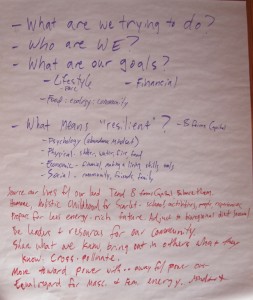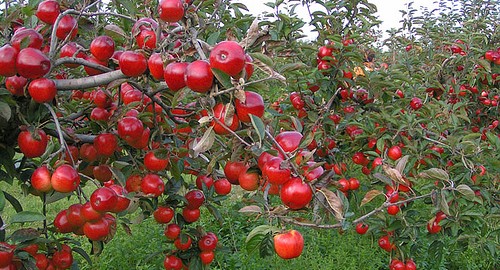The first step in any good design process is to clearly define our goals for the project. A clear grasp of goals helps us to hold a vision, make design and implementation decisions and strategically allocate limited resources. The goal helps us orient our actions in the right direction. This way we can distinguish between which elements are the right fit for the right place or which actions take us toward our goal versus away from it. A good goal consists of a couple sentences that clearly articulate a statement of purpose. This is different from an element or list of elements that might go into the system.
Here’s an example: if i ask you what your goal is and you say “i want to grow apples,” this is a good start but we’re not quite there yet. Apples would be an element in the system and the system overall would be oriented to some larger goal. So i might ask you “why do you want to grow apples?” After you think about it you might say that apples are a good fruit crop for our climate and you like to eat apples. Underneath the desire for apples we get closer to the goal, which is why i might ask “why?” a few times. In this case you want to grow apples because you want to grow your own food in a manner that is a good fit for our climate. So a couple goals we can infer are 1) to grow your own food and 2) to adapt to the existing climate.

Goals can be summarized into a few sentences like in a holistic goal statement or they can be summarized in a list of bullet points. If it’s in a list of bullet points it’s important to remain focused on the deeper desires for why we want to do a thing rather than list out a bunch of elements. A wish list is also a useful exercise, but it’s best to separate that list from the goals. A clear understanding of goals help us to decide whether an element on a wish list is really necessary or if we can come up with a different solution to some design challenge.
Another example might be where a client says to me that they really want hugelkultur beds. Hugelkultur is a great way to turn rotting waste wood into viable garden beds, but it is a fairly significant construction project. After a discussion about why they landed on the element of hugelkultur we discover that the underlying desire is to manage water, make use of waste wood and turn it into an asset like growing space. Once we discover that the primary goal is to manage water, we may decide that it makes more sense to cut swales based on site conditions, soil types, volume of water and financial resources.
Clear vision and goals helps us make strategic decisions, allocate limited resources, and pivot to the most appropriate design solution. A focus on goals allows us to remain somewhat non-attached to specific elements so that we can focus instead on solving design challenges with the most appropriate strategies based on site conditions and other constraints.


